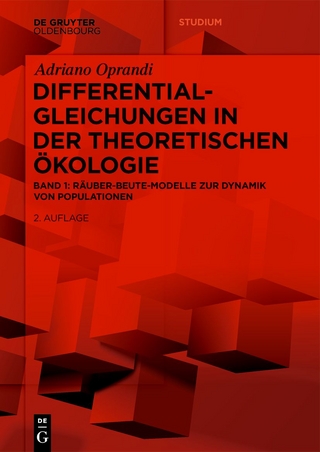
Theory and Practice of Finite Elements
Seiten
2004
Springer-Verlag New York Inc.
978-0-387-20574-8 (ISBN)
Springer-Verlag New York Inc.
978-0-387-20574-8 (ISBN)
Presenting the mathematical theory of finite elements, this text develops the theoretical basis for the finite element methods, emphasizing inf-sup conditions over the more conventional Lax-Milgrim paradigm. It addresses various applications and practical implementations of the method, respectively. It contains many examples and exercises.
The origins of the finite element method can be traced back to the 1950s when engineers started to solve numerically structural mechanics problems in aeronautics. Since then, the field of applications has widened steadily and nowadays encompasses nonlinear solid mechanics, fluid/structure interactions, flows in industrial or geophysical settings, multicomponent reactive turbulent flows, mass transfer in porous media, viscoelastic flows in medical sciences, electromagnetism, wave scattering problems, and option pricing (to cite a few examples). Numerous commercial and academic codes based on the finite element method have been developed over the years. The method has been so successful to solve Partial Differential Equations (PDEs) that the term "Finite Element Method" nowadays refers not only to the mere interpolation technique it is, but also to a fuzzy set of PDEs and approximation techniques. The efficiency of the finite element method relies on two distinct ingredi ents: the interpolation capability of finite elements (referred to as the approx imability property in this book) and the ability of the user to approximate his model (mostly a set of PDEs) in a proper mathematical setting (thus guar anteeing continuity, stability, and consistency properties). Experience shows that failure to produce an approximate solution with an acceptable accuracy is almost invariably linked to departure from the mathematical foundations. Typical examples include non-physical oscillations, spurious modes, and lock ing effects. In most cases, a remedy can be designed if the mathematical framework is properly set up.
The origins of the finite element method can be traced back to the 1950s when engineers started to solve numerically structural mechanics problems in aeronautics. Since then, the field of applications has widened steadily and nowadays encompasses nonlinear solid mechanics, fluid/structure interactions, flows in industrial or geophysical settings, multicomponent reactive turbulent flows, mass transfer in porous media, viscoelastic flows in medical sciences, electromagnetism, wave scattering problems, and option pricing (to cite a few examples). Numerous commercial and academic codes based on the finite element method have been developed over the years. The method has been so successful to solve Partial Differential Equations (PDEs) that the term "Finite Element Method" nowadays refers not only to the mere interpolation technique it is, but also to a fuzzy set of PDEs and approximation techniques. The efficiency of the finite element method relies on two distinct ingredi ents: the interpolation capability of finite elements (referred to as the approx imability property in this book) and the ability of the user to approximate his model (mostly a set of PDEs) in a proper mathematical setting (thus guar anteeing continuity, stability, and consistency properties). Experience shows that failure to produce an approximate solution with an acceptable accuracy is almost invariably linked to departure from the mathematical foundations. Typical examples include non-physical oscillations, spurious modes, and lock ing effects. In most cases, a remedy can be designed if the mathematical framework is properly set up.
I Theoretical Foundations.- 1 Finite Element Interpolation.- 2 Approximation in Banach Spaces by Galerkin Methods.- II Approximation of PDEs.- 3 Coercive Problems.- 4 Mixed Problems.- 5 First-Order PDEs.- 6 Time-Dependent Problems.- III Implementation.- 7 Data Structuring and Mesh Generation.- 8 Quadratures, Assembling, and Storage.- 9 Linear Algebra.- 10 A Posteriori Error Estimates and Adaptive Meshes.- IV Appendices.- A Banach and Hilbert Spaces.- A.1 Basic Definitions and Results.- A.2 Bijective Banach Operators.- B Functional Analysis.- B.1 Lebesgue and Lipschitz Spaces.- B.2 Distributions.- B.3 Sobolev Spaces.- Nomenclature.- References.- Author Index.
| Reihe/Serie | Applied Mathematical Sciences ; 159 |
|---|---|
| Zusatzinfo | XIV, 526 p. |
| Verlagsort | New York, NY |
| Sprache | englisch |
| Maße | 155 x 235 mm |
| Themenwelt | Mathematik / Informatik ► Mathematik ► Analysis |
| Naturwissenschaften ► Physik / Astronomie | |
| ISBN-10 | 0-387-20574-8 / 0387205748 |
| ISBN-13 | 978-0-387-20574-8 / 9780387205748 |
| Zustand | Neuware |
| Informationen gemäß Produktsicherheitsverordnung (GPSR) | |
| Haben Sie eine Frage zum Produkt? |
Mehr entdecken
aus dem Bereich
aus dem Bereich
Buch | Softcover (2024)
De Gruyter Oldenbourg (Verlag)
59,95 €
Buch | Softcover (2024)
De Gruyter Oldenbourg (Verlag)
59,95 €


